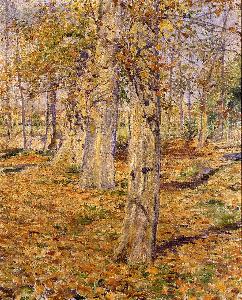Viscount Kuroda Seiki
Viscount Kuroda Seiki;Kuroda Seiki
Place: City Name In English (Optional)
Born: 1866
Death: 1924
Biography:
Viscount Kuroda Seiki, a Japanese painter and teacher, is renowned for introducing Western art theory and practice to the Japanese audience. Born on August 9, 1866, in Osaka, Japan, he played a pivotal role in the yōga (or Western-style) movement in late 19th and early 20th-century Japanese painting.
Early Life and Education
Kuroda Seiki's interest in art began at a young age. He was largely self-taught, with minimal formal training. However, his talent and dedication earned him recognition as one of the leading artists of his time. His work was characterized by its unique blend of traditional Japanese techniques and Western styles.
Artistic Career
Kuroda Seiki's artistic career spanned several decades, during which he created numerous paintings, including "Landscape with Red Trees" and "Portrait of a Woman". His work was exhibited at various museums, such as the Tokyo Museum and the Osaka Museum. He was also an influential teacher, and his students included notable artists like Nakamura Fusetsu.
Contribution to Japanese Art
Kuroda Seiki's contributions to Japanese art are numerous. He introduced Western techniques and styles to the Japanese audience, which had a significant impact on the development of yōga painting. His work also showcased the potential of Western-style painting in Japan, paving the way for future generations of artists.
Legacy
Today, Kuroda Seiki is remembered as 'the father of Western-style painting' in Japan. His legacy continues to inspire artists and art enthusiasts alike. The Wikioo.org platform offers a range of his paintings, including "Sunset over the Sea" and "Mountain Landscape", which can be accessed through their website.
- Viscount Kuroda Seiki's biography on Wikioo.org provides an in-depth look at his life and work.
- The Wikipedia page on Viscount Kuroda Seiki offers a comprehensive overview of his artistic career and contributions to Japanese art.
- Viscount Kuroda Seiki's paintings can be found in various museums, including the Tokyo Museum and the Osaka Museum.
of Kuroda Seiki's work include his unique blend of traditional Japanese techniques and Western styles, as well as his introduction of Western art theory and practice to the Japanese audience. His legacy continues to inspire artists and art enthusiasts alike, making him a significant figure in the history of Japanese art. In conclusion, Viscount Kuroda Seiki was a pioneering artist who played a crucial role in shaping the course of Japanese art. His contributions to yōga painting and his introduction of Western styles have had a lasting impact on the development of Japanese art. As an artist, he remains an important figure, and his work continues to be celebrated by art enthusiasts around the world.










